We have one good news for you to start off with! The most important choice – that you want to build yourself a log sauna – has already been made. The other good choice is that you are thinking of ordering your log sauna from Estonia – great decision. We promise that by the time you are done with reading this article, you will have made all the other decisions as well. You only need to write them down.
If you are going to be ordering a sauna (regardless of whether you will be ordering a log sauna from Estonia or elsewhere), and you are still undecided when it comes to a few things, then our experts will be happy to explain the pros and cons of each decision. The most important thing is for your sauna to meet all of your wishes and needs.
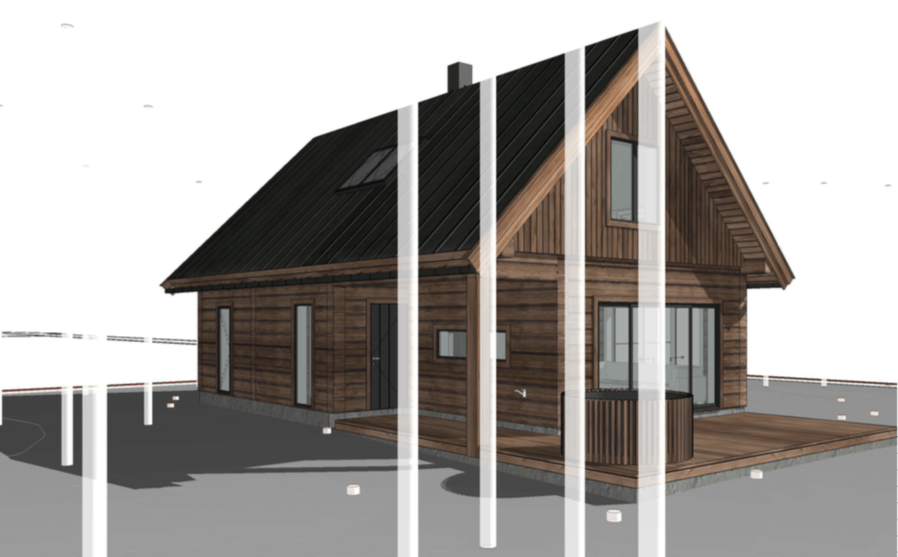
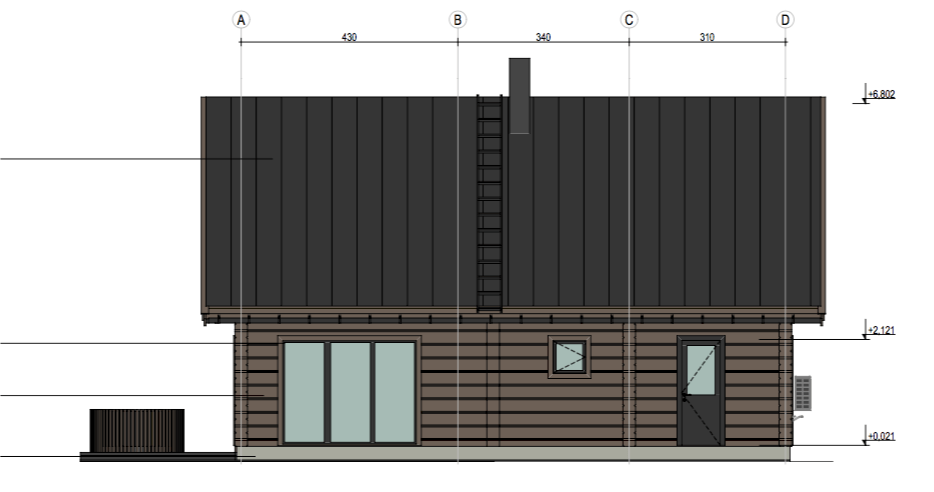
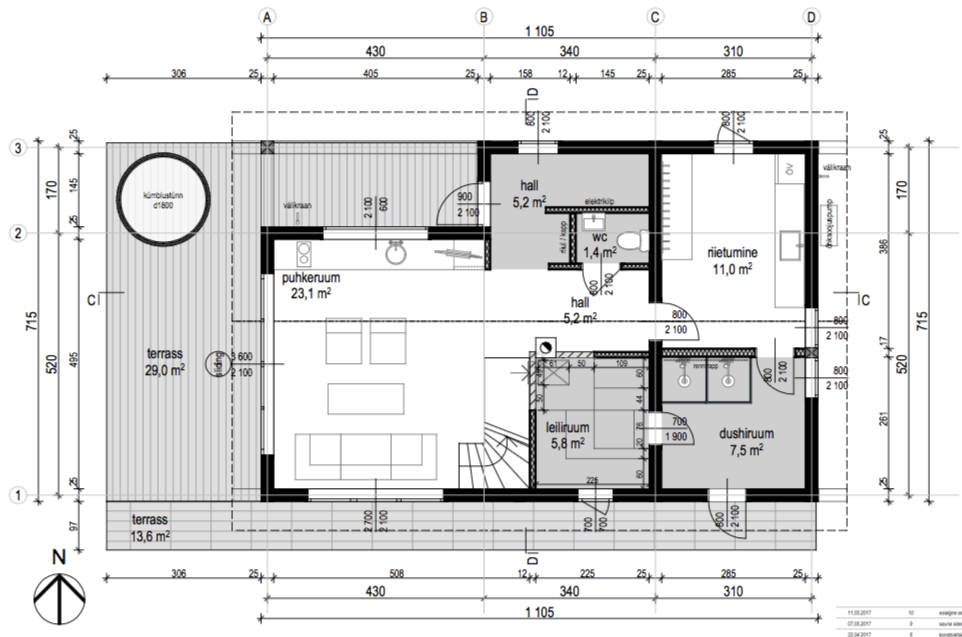
But let’s get started, or the sauna might get cold! (If we can allow for such a little joke.)
1. Traditional or modern log sauna?
The first choice that you must make is entirely fundamental. Think of whether you’d like a modern sauna, where the water comes from the tap, or a traditional one, where you need to carry water to the sauna with buckets.
Let’s immediately say that both have their own advantages and disadvantages – it’s just a matter of taste. Are you more of a person for whom sauna traditions and rituals are sacred, or do you just want a piping hot sauna without the hassle? However, you need to pay a little more for reduced hassle (as is mostly the case in life), and the price of such a sauna is a bit higher.
The reason is simple. If you want to have running hot and cold water in your sauna, you need to think about where the water comes from, where it gets warmed up, and where it will go. But that’s not all. Since we are talking about pipes here, you must also ensure that the sauna has above freezing temperatures all year round.
Your choices:
- traditional – carrying water with buckets;
- pipes and hot water, and all the amenities that come with it.
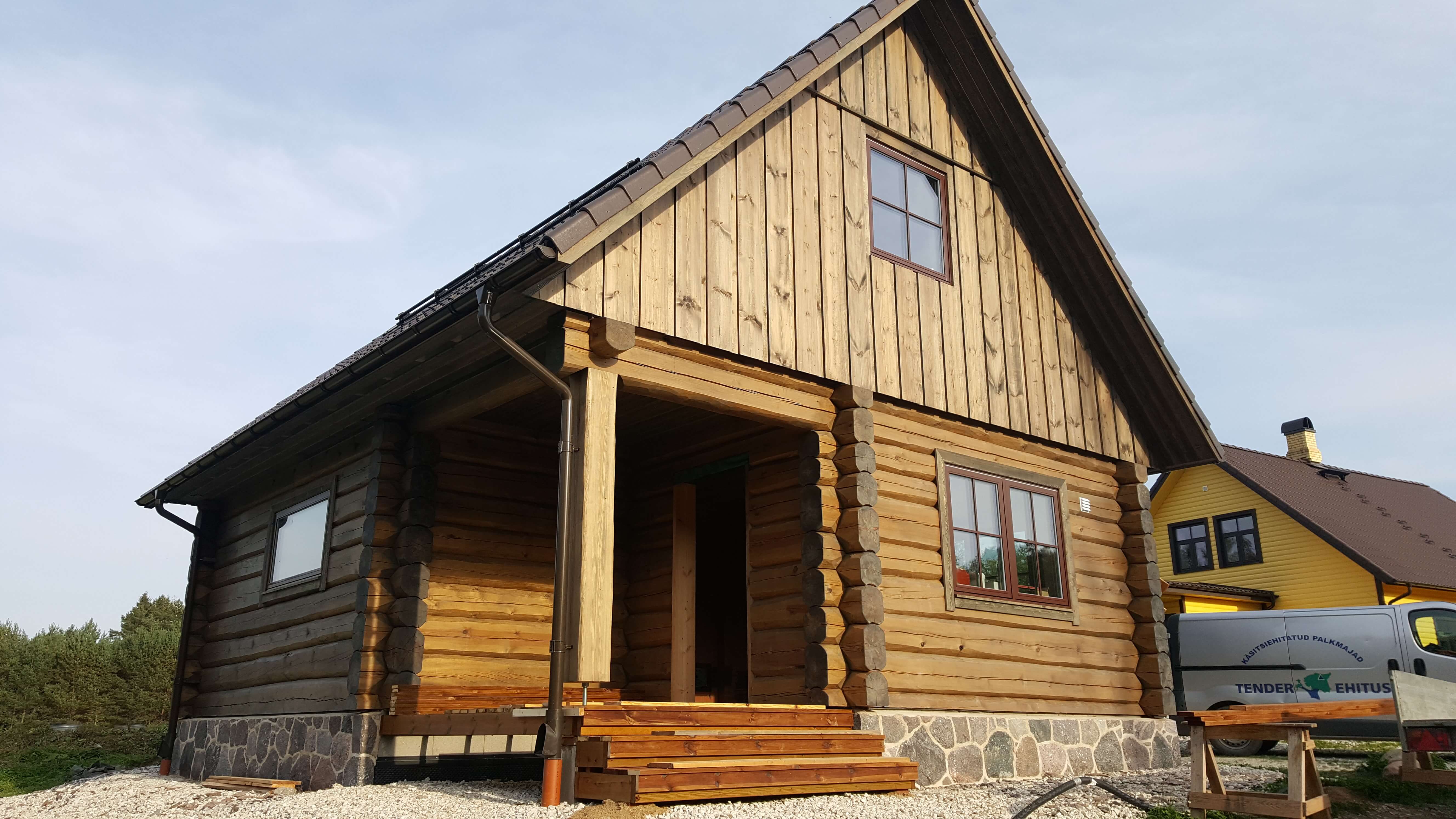
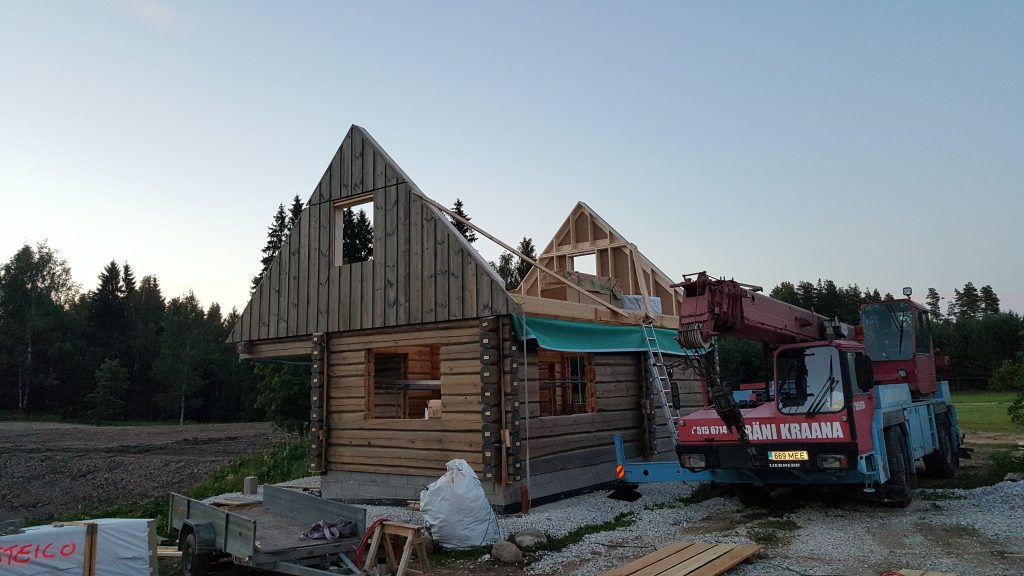
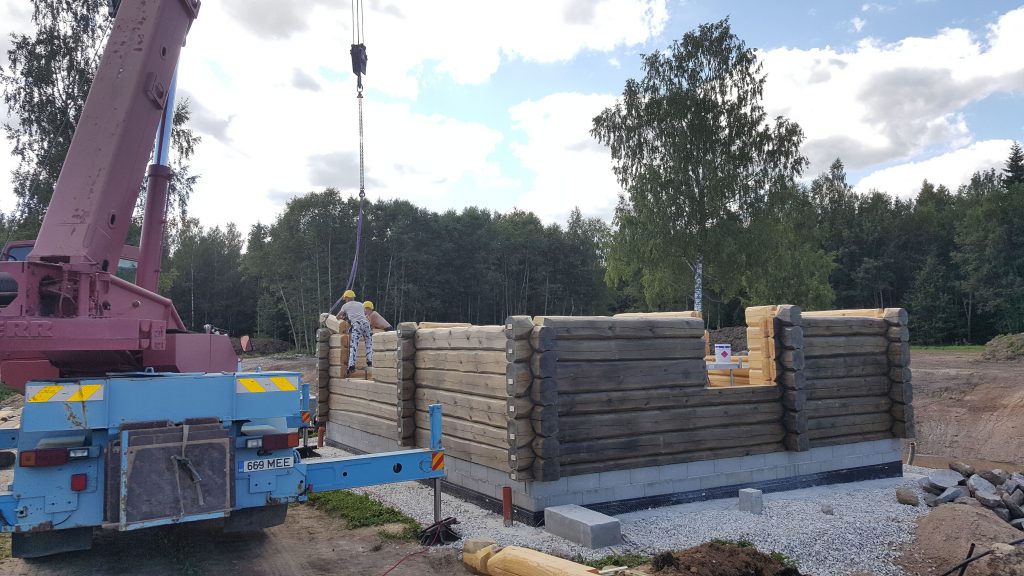
2. What kind of a heater would you like in your log sauna?
This question actually boils down to where you want the smoke to go. Whether directly to the chimney, or instead, first into the sauna room and out through a hole in there? If you are a smoke sauna fan then there is no doubt which kind of a sauna you will be constructing, right?
If you don’t really enjoy smoke saunas, then you have one extra choice to make. Do you want the type of heater where the fire penetrates the stones of the heater? In this case, the sauna will take more time to heat, because the weight of the stones is higher. The good thing about this is that, if you for example heat the sauna for four hours, you will also be able to enjoy the sauna for four hours without adding any firewood.
This type of a heater requires higher ceilings and a larger sauna room than usual; the benches need to be higher as well for the steam from the rocks to reach the bathers.
The most popular choice these days is a heater in which the rock mass is placed around the stove and is heated up by the shell of the stove. There are less stones, they heat up faster, but you must keep the fire going when bathing, otherwise it cools down.
Your choices:
- heater with a chimney:
- heater with a larger rock mass – takes time, but you can bathe in steam for longer;
- smaller rock mass – faster and shorter bathing experience;
- smoke sauna.
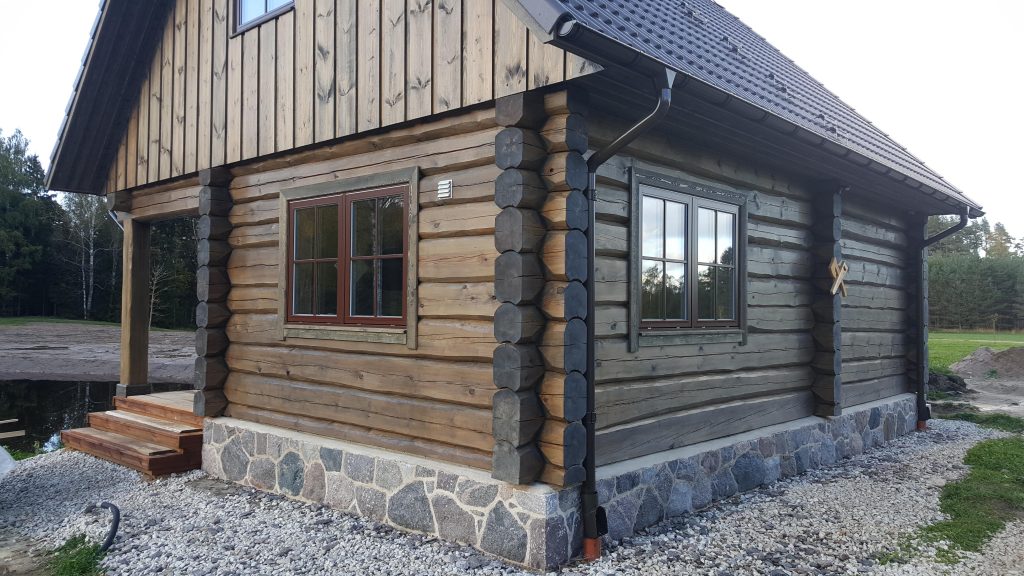
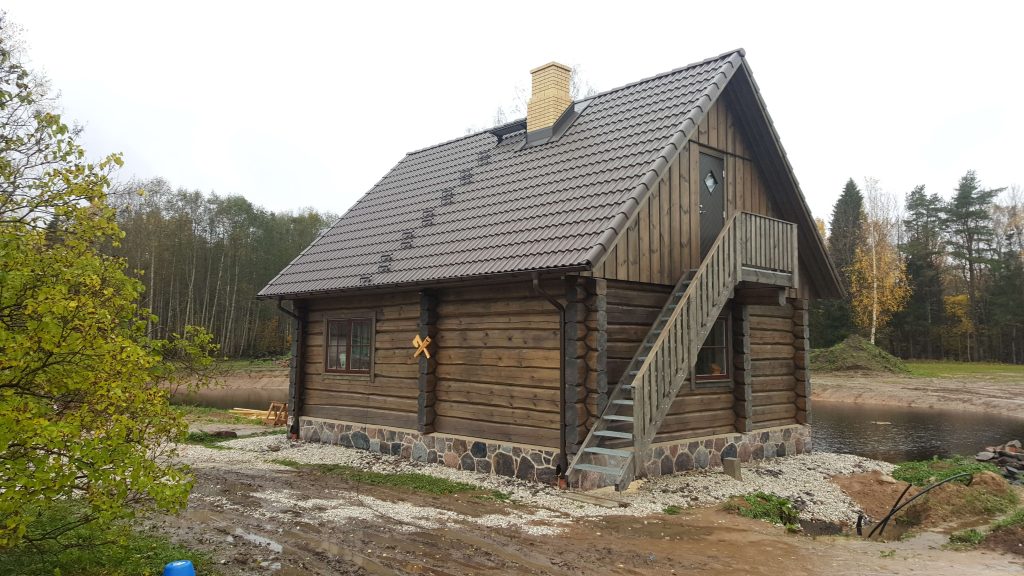
3. How do you heat up the water?
The third decision before ordering a log sauna goes back to water. Namely, you must decide how you will heat it up. If you picked the so-called “dry solution” at the first point and you will carry water with buckets, then you can skip this point – your sauna water heats up in a tank or cauldron next to the furnace.
However, if you will be bringing a pipe to the sauna, the very first option is that the hot water will come from the utility line, and there is no need to do anything else than to open the tap in the sauna. The second option is an on-site boiler, and the third, solar thermal collectors.
We do not recommend having a closed boiler which has pipes passing through the sauna stove in the sauna room. The reason is simple – you might know how long it takes to heat the water, but your friend making the fire will not. If water evaporates in the boiler and the discharge valve malfunctions, you’re in big trouble.
Your choices:
- warm water comes directly from the main utility line;
- solar collector;
- local boiler.
4. Where does the water go?
Thick wooden floor fits well into an old school sauna – water goes through a gutter below the floorboards and drains straight into the ground. Depending on the soil, it is also necessary to choose the distance between the water outlet and the sauna. For example, gravel soil drains water better and the drain does not have to be as far as with clay soils.
The type of foundation also depends on water drainage. If it is a smoke sauna, there is no need for solid foundation – bearing stones or posts are sufficient, but in this case, the floor will not be insulated. Nevertheless, we can confirm that your feet won’t be freezing in the winter – we’ve tried it out ourselves.
Other types of saunas require a foundation, which also strongly affects the price of the log house. It’s cheaper without. Like always. What type of foundation your log sauna needs depends on the soil type, but we can see about that when the designer starts his work.
Your choices:
- water flows through the floor into the soil;
- the sauna has a proper foundation and sewage.
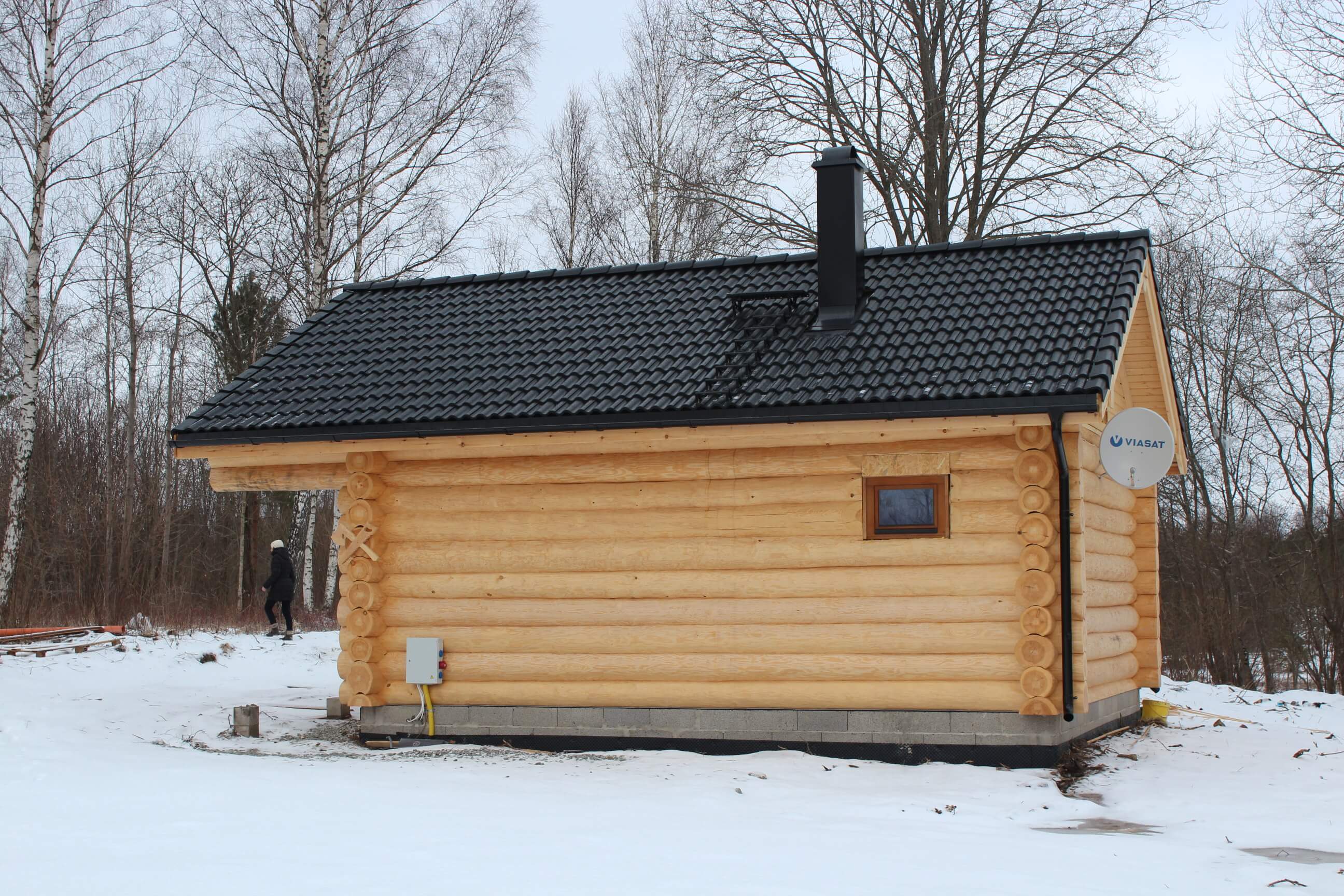
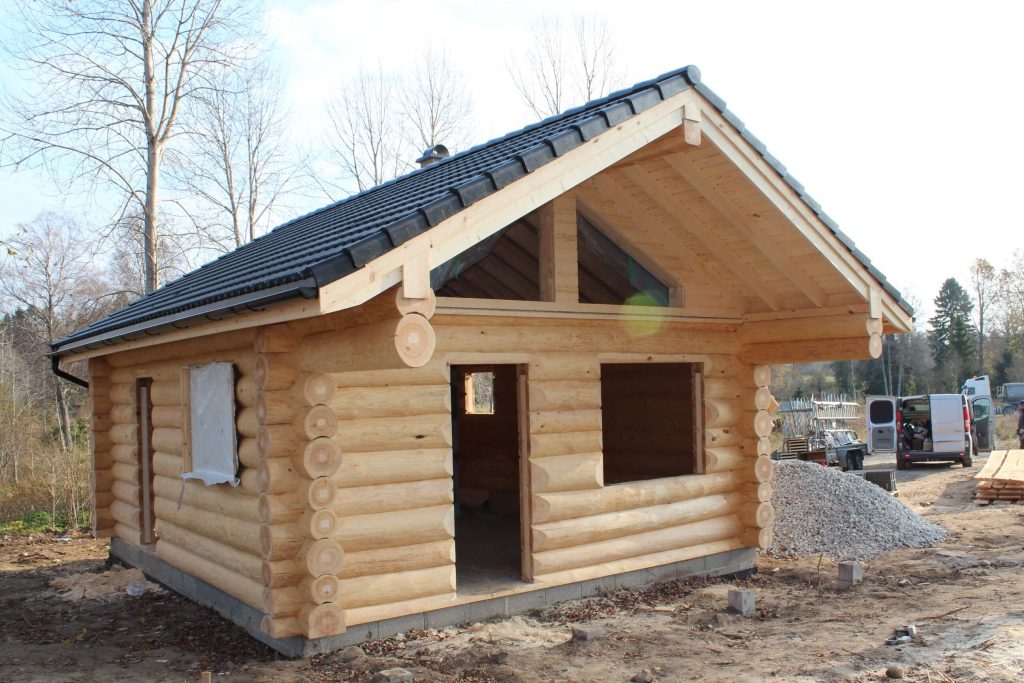
5. Interior lining in the log sauna – yes or no?
Let’s look at what you need to consider in both cases.
Log walls are very beautiful, but there are some buts.
- Logs in the sauna room crack more than we would like. This is caused by the high temperature difference between the inside and the outside.
- If you rarely heat your sauna, it takes a lot of time and firewood to get it warm. The reason is the high thermal capacity of the logs.
- Coniferous logs release resin, so you might get stuck when you lean your back against the wall.
But if all this didn’t make you want to give up unlined walls, we recommend that you make the external wall part from thicker logs; this gives better heat insulation. The partitions should be from stone and the washing area should be located near a stone wall, because the logs get less wet this way.
Of course, if you decide to use inner lining, the beautiful logs will be hidden, which is the only drawback of this solution. The good thing is that such a solution creates the possibility to install both additional heat insulation and a vapor barrier to protect the logs. The latter also helps to prevent heat losses.
Using an inner lining in the sauna and washing rooms creates possibilities for good solutions for the floor and wall joints. You can use hydro insulation to create a so-called “bath” on the floor which partially extends to the walls. Insulation can be hidden behind the lining. And actually, lining can also be very beautiful.
Your choices:
- logs are visible, but you must take into account the drawbacks that come with it;
- logs are hidden underneath, providing opportunities for better technical solutions.
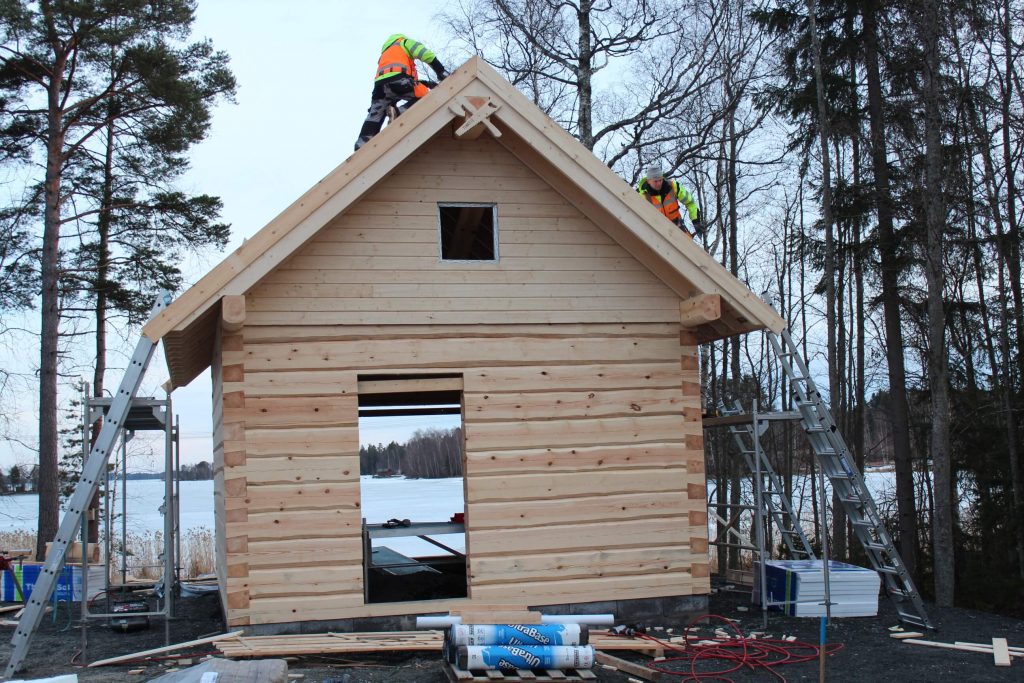
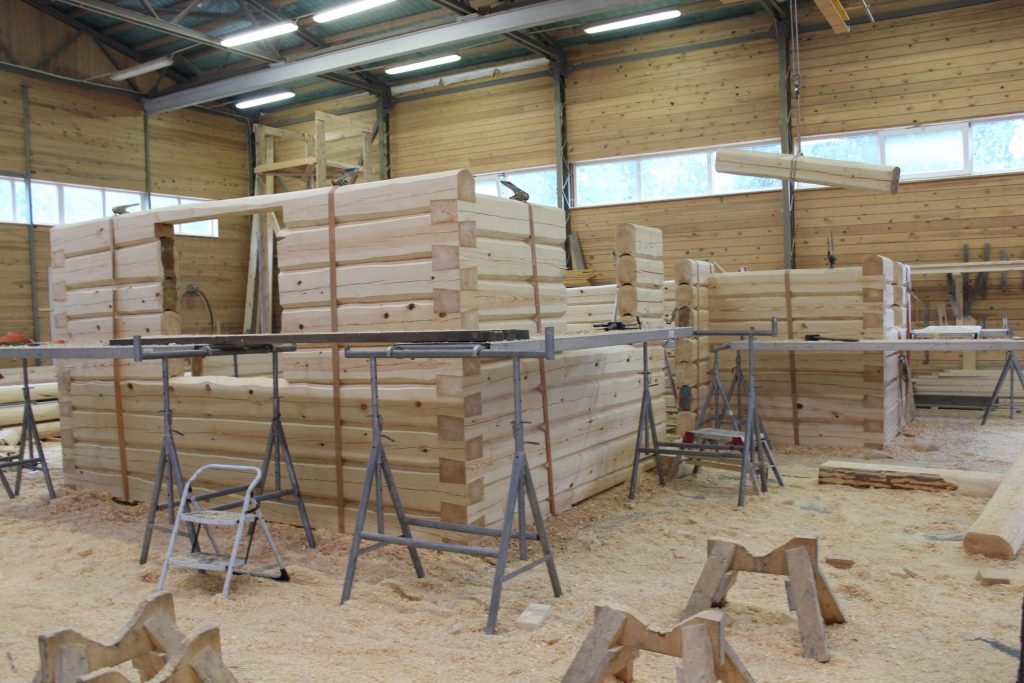
6. What other wishes do you have apart from getting good hot bathing sessions?
You need to think about your lifestyle. Do you prefer to go to the sauna alone, or would you like to host a bigger group and relax for longer? This influences the size of the sauna front room, for example, whether you’d need a fireplace, etc.
Or perhaps you plan to accommodate guests in the sauna house? In case you build guest accommodation on the second floor of the sauna, you should take into account that in the summer, the entire sauna house will remain hot for a long time and you should consider cooling (e.g. a window in the sauna room). In winter, however, you’d need extra heat, which can be solved with a hatch. We’ll figure it out!
Your choices:
- the most important thing is a sauna, other things are not important;
- sauna house could also be used for hosting guests and for accommodation.
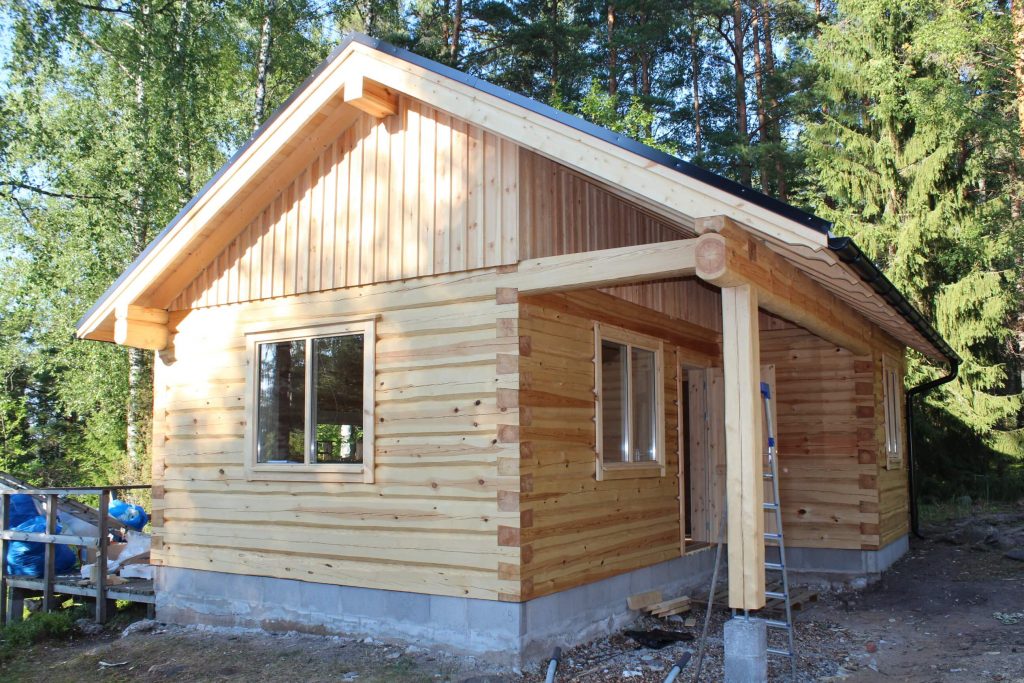
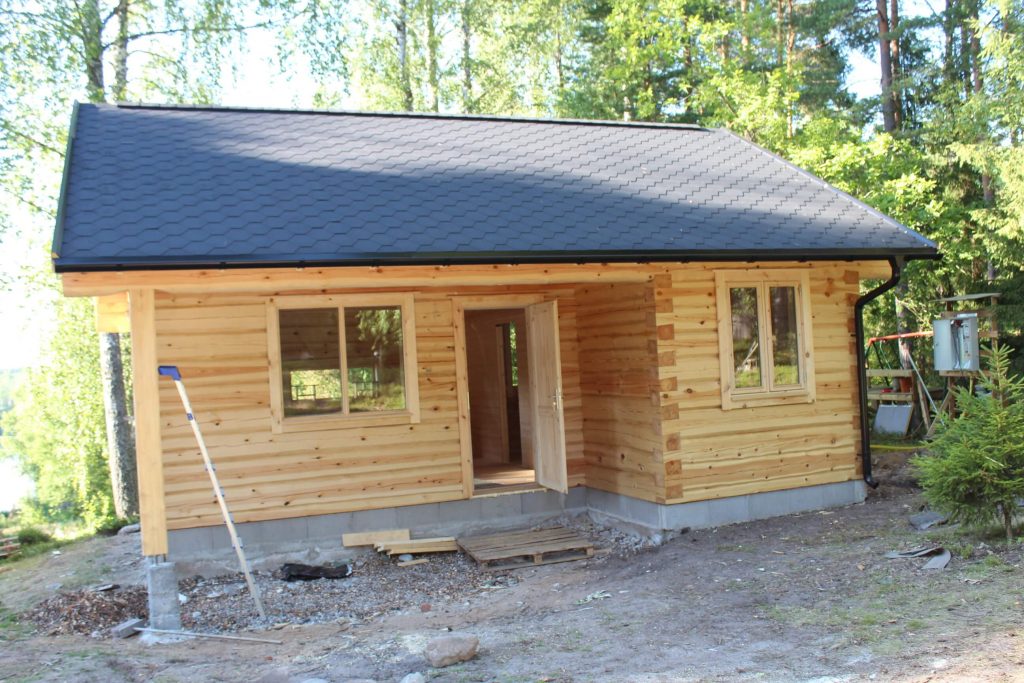
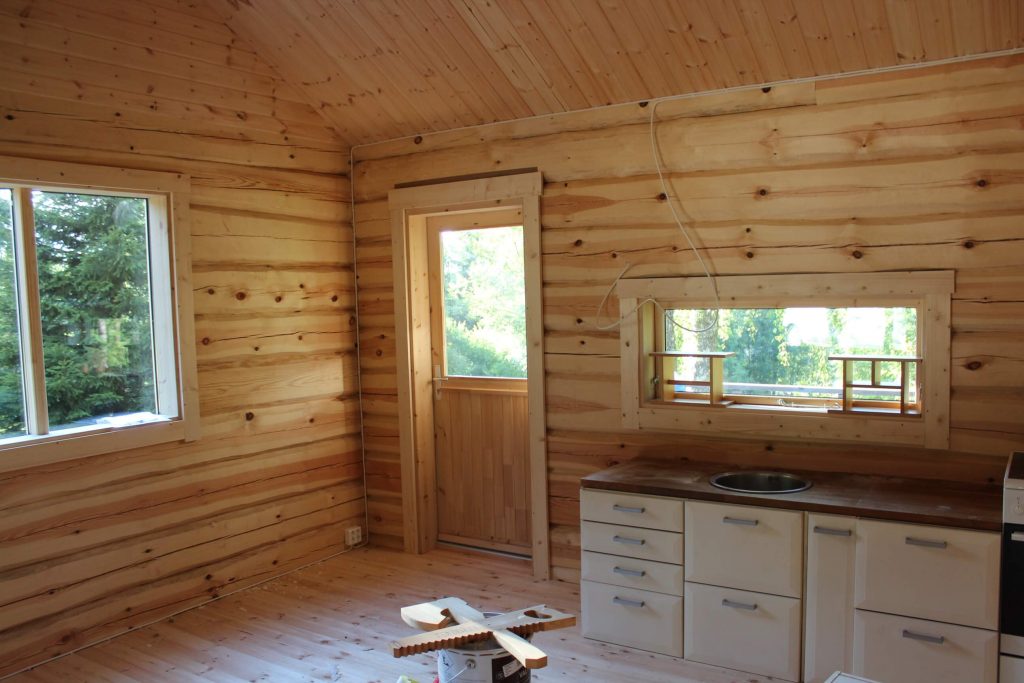
7. Will the sauna house have a terrace?
It shouldn’t take long to think about this one. If you already plan to buy such a nice sauna, the construction should also mean adding extra space and a seating area. We recommend building a terrace that faces towards the setting sun, as you will usually be using the sauna in the evenings. There is nothing more enjoyable than sitting on the terrace after bathing in the steam and… eh… drinking juice.
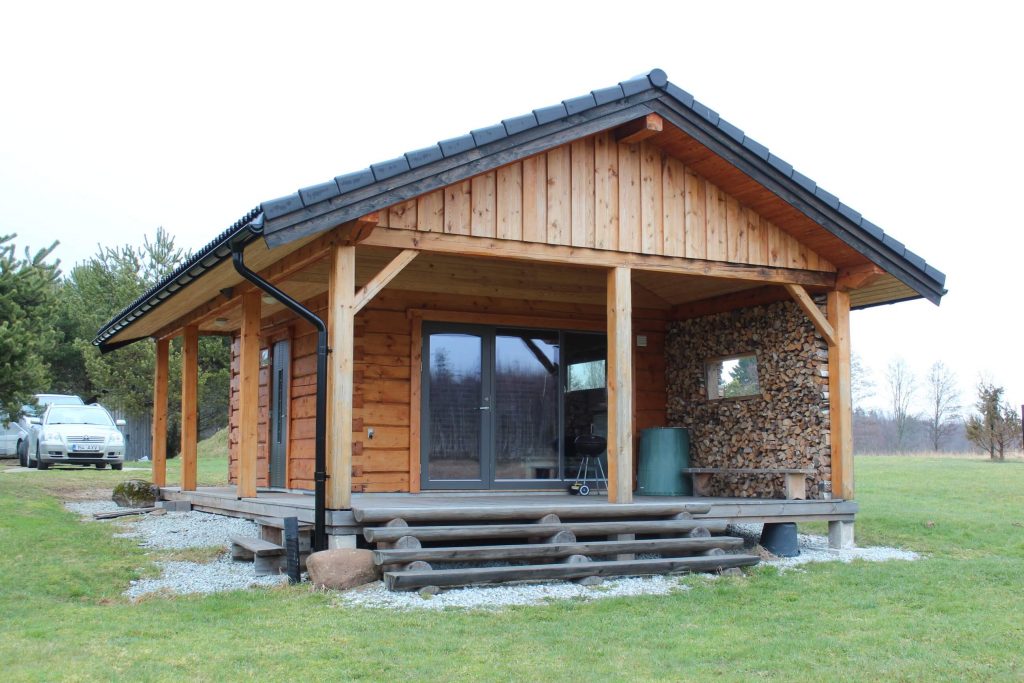
The terrace could also be covered with a roof, as this will give you a large extra space with a low cost, and if desired, you can make it more windproof with lightweight wall panels. The price of the log sauna will not change much because of it.
Decisions made?
Very good, so we thought. Please contact us to order your log sauna from Estonia and we will make it for you. Also, let us know if you have any questions and need our consultation. We will be happy to help.
